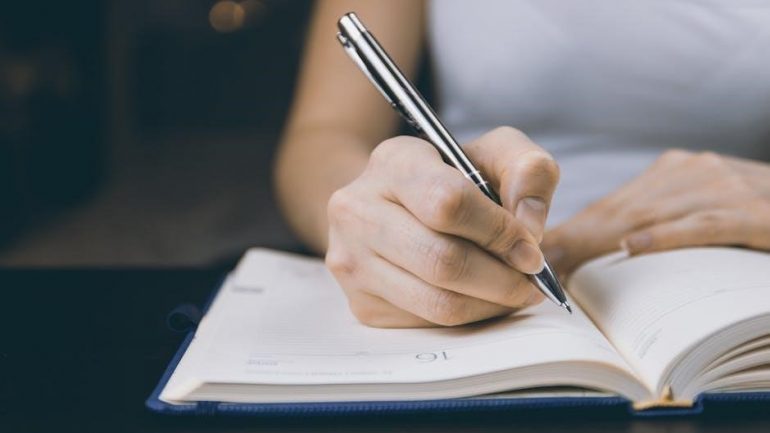Grounding techniques, like the 5-4-3-2-1 method, help individuals focus on the present by engaging their senses. This simple, effective practice reduces stress and enhances mindfulness instantly.
What is Grounding?
Grounding is a mindfulness technique that helps individuals focus on the present moment by engaging their senses. It involves identifying specific elements in one’s environment, such as things they can see, touch, hear, smell, or taste, to anchor their awareness in reality. This practice is particularly effective for managing anxiety, stress, or overwhelming emotions by redirecting attention away from internal distress and toward tangible, external stimuli. Grounding techniques, like the 5-4-3-2-1 method, are simple, accessible, and can be practiced anywhere, making them a versatile tool for enhancing mental well-being and promoting emotional balance.
The Purpose of Grounding Techniques
The purpose of grounding techniques is to bring individuals back to the present moment, helping them regain emotional balance and reduce feelings of anxiety or disconnection. By focusing on sensory experiences, grounding techniques like the 5-4-3-2-1 method provide a mental anchor, diverting attention from distressing thoughts to tangible, external stimuli. This practice aims to enhance mindfulness, improve concentration, and foster a sense of calm. It is particularly useful in stressful situations, offering a quick and effective way to manage overwhelming emotions. Grounding techniques are versatile and can be applied anywhere, making them a valuable tool for maintaining mental well-being in daily life.
Why the 5-4-3-2-1 Technique is Popular
The 5-4-3-2-1 grounding technique has gained popularity due to its simplicity and effectiveness. It requires no special tools or preparation, making it accessible to anyone, anywhere. The method’s structured approach—focusing on five senses sequentially—provides a clear, step-by-step process that is easy to remember and practice. Its versatility allows it to be used in various situations, from managing anxiety in public places to enhancing focus during work. Additionally, its quick results and calming effects have made it a favorite among mindfulness practitioners and mental health professionals. The technique’s widespread adoption on platforms like TikTok further highlights its appeal as a practical, free, and efficient wellness hack for modern life.

The 5-4-3-2-1 Grounding Technique
The 5-4-3-2-1 grounding technique is a mindfulness exercise that engages the senses to anchor oneself in the present moment, promoting calm and clarity through a structured, simple process.
What is the 5-4-3-2-1 Technique?
The 5-4-3-2-1 grounding technique is a mindfulness exercise that involves identifying and engaging with sensory experiences in the environment. It begins by naming five things that can be seen, followed by four things that can be touched, three things that can be heard, two things that can be smelled, and one thing that can be tasted. This structured approach helps individuals focus on the present moment, reducing anxiety and stress by grounding their awareness in tangible sensory experiences. The simplicity and accessibility of the technique make it a popular choice for those seeking quick and effective stress relief. By systematically engaging the senses, the 5-4-3-2-1 method provides a clear pathway to mindfulness and emotional balance.
How to Practice the 5-4-3-2-1 Exercise
To practice the 5-4-3-2-1 grounding technique, start by taking a deep breath to signal the beginning of the exercise. Begin by identifying five things you can see around you, such as objects, colors, or patterns. Next, acknowledge four things you can touch, like your feet on the ground or the texture of nearby surfaces. Then, listen for three things you can hear, focusing on subtle sounds in your environment. Continue by identifying two things you can smell, even if the scents are faint. Finally, conclude by naming one thing you can taste, which could be gum, a sip of water, or a piece of candy. This structured process helps anchor your mind in the present moment, reducing stress and enhancing focus. The exercise is simple, portable, and effective for daily use.
Step-by-Step Guide to the 5-4-3-2-1 Method
Start by taking a deep breath to center yourself. Identify five things you can see, such as objects, colors, or patterns around you. Next, notice four things you can touch, like your feet on the ground or the texture of nearby surfaces. Then, focus on three things you can hear, including subtle sounds in your environment. Continue by identifying two things you can smell, even if the scents are faint. Finally, name one thing you can taste, which could be gum, a sip of water, or a piece of candy. This structured process helps anchor your mind in the present, reducing stress and enhancing focus. The exercise is simple, portable, and effective for daily use to promote mindfulness.

Benefits of the 5-4-3-2-1 Grounding Exercise
The 5-4-3-2-1 technique reduces stress and anxiety, improves focus, and enhances mindfulness by grounding you in the present moment through sensory engagement.
Reducing Stress and Anxiety
The 5-4-3-2-1 grounding technique is a powerful tool for reducing stress and anxiety by shifting focus from overwhelming thoughts to the present moment. By engaging the senses, individuals can calm their minds and bodies. This method works quickly, often providing relief within minutes. It interrupts the cycle of anxious thinking, offering a simple yet effective way to regain emotional balance. The technique is particularly useful in stressful situations, as it requires no special tools or preparation. Regular practice strengthens mental resilience, making it easier to manage stress and anxiety in the long term. Its accessibility and effectiveness make it a popular choice for mindfulness and mental well-being.

Improving Focus and Concentration
The 5-4-3-2-1 grounding technique enhances focus and concentration by training the mind to engage with the present moment. By systematically directing attention to sensory details, individuals can quiet mental distractions and improve clarity. This exercise helps break the cycle of mind-wandering, fostering greater mental discipline. Regular practice strengthens the ability to concentrate, making it easier to stay focused in daily tasks. The technique’s structured approach ensures gradual improvement in attention span, benefiting both personal and professional productivity. Its simplicity and accessibility make it an ideal tool for anyone seeking to enhance their focus without requiring extensive time or resources. Over time, this practice can lead to improved performance and reduced mental fatigue in various aspects of life.
Enhancing Mindfulness and Presence
The 5-4-3-2-1 grounding technique is a powerful tool for enhancing mindfulness and presence. By intentionally focusing on sensory experiences, individuals cultivate a deeper connection to the present moment. This practice encourages awareness of their surroundings, helping to quiet mental chatter and reduce thought loops. Regular use of the technique fosters a greater sense of calm and clarity, allowing individuals to engage more fully in daily activities; The structured nature of the exercise makes it accessible and effective, even for those new to mindfulness practices. Over time, this technique can lead to increased self-awareness and a more profound appreciation for the here and now, enriching both personal and professional experiences. Its simplicity and adaptability make it an ideal addition to any mindfulness routine.

Engaging the Senses in Grounding
Engaging the senses is central to grounding techniques like 5-4-3-2-1, helping individuals connect with their environment. This method involves noticing specific sensory details to enhance presence and calmness effectively.
5 Things You Can See
Identifying five things you can see is the first step in the 5-4-3-2-1 grounding technique. Look around and name objects, such as furniture, colors, or patterns. This step helps distract the mind from anxious thoughts by focusing on visual details. For example, you might notice a chair, a painting, a book, a window, and a flower. The goal is to engage your sight and anchor yourself in the present moment. This simple yet effective practice can be done anywhere, making it a versatile tool for managing stress and enhancing mindfulness. By focusing on what you see, you begin to reconnect with your surroundings and calm your mind.
4 Things You Can Touch
The second step in the 5-4-3-2-1 grounding technique involves identifying four things you can touch. This could be the texture of your clothing, the surface of a chair, the feeling of your feet on the ground, or the sensation of the air on your skin. By focusing on tactile sensations, you further anchor yourself in the present moment. This step encourages physical awareness, helping to distract from overwhelming thoughts. For example, you might notice the softness of a blanket, the coolness of a breeze, or the firmness of the floor beneath you. Engaging your sense of touch can provide a calming effect, making it easier to manage stress and regain emotional balance. This practice is simple yet powerful, requiring only a moment of intentional focus.
3 Things You Can Hear
The third step in the 5-4-3-2-1 grounding technique involves identifying three things you can hear. This could be the sound of a clock ticking, birds chirping, or even the hum of a computer. By focusing on auditory sensations, you deepen your connection to the present moment. This step helps distract from anxious thoughts by redirecting your attention to your surroundings. For example, you might notice the sound of footsteps, the rustling of leaves, or the murmur of voices in the distance. Engaging your sense of hearing can be incredibly grounding, as it reminds you of your physical presence in the world. This practice encourages mindfulness and can be done anywhere, making it a versatile tool for managing stress and anxiety effectively.
2 Things You Can Smell
The next step in the 5-4-3-2-1 grounding technique is to identify two things you can smell. This could be the scent of freshly brewed coffee, the aroma of a candle, or even the faint smell of cleaning products in the room. By focusing on these odors, you further anchor yourself in the present moment. Smells often evoke strong emotional responses, making this step particularly effective for grounding. For example, the earthy smell of grass after rain or the fragrance of essential oils can instantly calm the mind. This sensory engagement helps reduce anxiety and brings clarity to your thoughts, reinforcing the technique’s purpose of promoting mindfulness and emotional balance.
1 Thing You Can Taste
The final step in the 5-4-3-2-1 grounding technique is to identify one thing you can taste. This could be a piece of gum, a sip of coffee, or even the subtle flavor of a mint. By focusing on this sensation, you further solidify your connection to the present moment. The act of tasting engages your senses deeply, helping to quiet the mind and reduce feelings of overwhelm. For example, savoring the sweetness of a piece of candy or the bitterness of dark chocolate can ground you instantly. This simple yet powerful exercise reminds you that you are here, now, and fully engaged with your surroundings. It’s a quick and effective way to practice mindfulness and regain emotional balance whenever needed.

Why the 5-4-3-2-1 Technique Works
The 5-4-3-2-1 technique works by grounding you in the present through sensory engagement. It systematically shifts focus from stress to tangible experiences, calming the mind instantly.
The Science Behind Grounding Techniques
Grounding techniques, such as the 5-4-3-2-1 method, are rooted in neuroscience and psychology. They work by shifting the brain’s focus from stress to the present moment, activating the parasympathetic nervous system. This reduces the body’s “fight-or-flight” response and promotes relaxation. The technique engages multiple senses, stimulating different brain regions and creating a balanced state of awareness. By systematically focusing on sensory inputs, grounding helps disrupt anxious thought patterns and anchors the mind in reality. This neurobiological response makes grounding an effective tool for managing anxiety and stress, aligning with principles of mindfulness and exposure therapy. The simplicity and accessibility of these techniques contribute to their widespread use and effectiveness in mental health practices.

How Grounding Affects the Brain
Grounding techniques, such as the 5-4-3-2-1 method, directly impact the brain by activating the parasympathetic nervous system, which promotes relaxation and reduces stress. This practice shifts the brain’s focus from anxious thoughts to sensory experiences, calming the mind. The systematic engagement of senses—sight, touch, hearing, smell, and taste—stimulates various brain regions, enhancing mindfulness and presence. By interrupting anxiety loops, grounding helps the brain return to a balanced state, fostering emotional regulation. The simplicity of this technique makes it accessible, allowing individuals to quickly reset their mental state without requiring specialized tools or training. This neurobiological response underscores the effectiveness of grounding in managing stress and anxiety, making it a valuable tool for mental well-being.
The Role of Sensory Engagement in Grounding
Sensory engagement is central to grounding techniques like the 5-4-3-2-1 method, as it anchors the mind in the present moment. By intentionally focusing on specific stimuli—such as five things seen, four touched, three heard, two smelled, and one tasted—the brain diverts attention from stressful thoughts. This multi-sensory approach activates various neural pathways, enhancing cognitive grounding and emotional stability. The structured progression from higher to lower senses (e.g., sight to taste) ensures a gradual, immersive experience. Sensory engagement not only distracts from anxiety but also reinforces the connection to one’s environment, promoting a sense of control and calm. This holistic approach to sensory activation is a key reason grounding techniques are widely effective for mental well-being and stress reduction, making them a popular choice in mindfulness practices.

Practical Applications of the 5-4-3-2-1 Technique

The 5-4-3-2-1 technique is versatile, usable anywhere, and requires no tools. It’s ideal for public spaces, stressful situations, or combining with other mindfulness practices for enhanced calm and focus.
Using the Technique in Public Places
The 5-4-3-2-1 grounding technique is highly versatile and can be practiced in public places, making it an ideal tool for managing stress on the go. Whether you’re in a crowded space, on public transport, or during a busy day, this exercise can help you stay calm and focused. By engaging your senses, you can quickly shift your attention from overwhelming stimuli to the present moment. For example, in a noisy café, you might identify five things you see, four things you can touch, three sounds, two smells, and one taste. This practice is discrete, requiring no equipment, and can be done anywhere without drawing attention. It’s a practical way to reduce anxiety and regain composure in public environments.
Grounding in Stressful Situations
The 5-4-3-2-1 grounding technique is particularly effective in stressful situations, offering a quick and accessible way to calm the mind and body. When overwhelmed, this exercise interrupts the anxiety spiral by redirecting focus to the present moment. By engaging the senses, individuals can ground themselves in reality, reducing emotional intensity. For instance, during a tense meeting or argument, naming five things you see, four you can touch, three you hear, two you smell, and one you taste helps shift focus away from stress. This technique is especially useful because it requires no tools or preparation, making it a practical solution for managing stress in real-time. Regular practice enhances emotional regulation, providing a sense of control during difficult moments.
Combining with Other Mindfulness Practices
The 5-4-3-2-1 grounding technique can be seamlessly integrated with other mindfulness practices to enhance their effectiveness. For instance, it can serve as a foundation before meditation or deep breathing exercises, helping to center the mind first. Pairing it with progressive muscle relaxation can amplify feelings of calm, as grounding anchors the body in the present. Additionally, incorporating the technique into yoga routines or guided imagery can deepen focus and reduce anxiety. Even during a mindful walk, the 5-4-3-2-1 method can heighten sensory awareness, making the experience more immersive. This versatility allows individuals to tailor their mindfulness practice to suit their needs, creating a holistic approach to mental and emotional well-being. Combining grounding with other techniques fosters greater resilience and emotional balance in daily life.

The 5-4-3-2-1 grounding technique is a simple, effective tool for calming the mind and reconnecting with the present. Its accessibility makes it a powerful practice for anyone seeking mindfulness and peace.
Final Thoughts on the 5-4-3-2-1 Grounding Technique
The 5-4-3-2-1 grounding technique is a powerful, accessible tool for mindfulness and stress relief. By engaging all five senses, it helps individuals reconnect with the present moment, reducing anxiety and enhancing focus. Its simplicity makes it ideal for use anywhere, at any time, without requiring any special equipment. This technique has gained popularity on platforms like TikTok but has been a trusted method among therapists for years. It’s free, easy to practice, and offers immediate benefits for mental well-being. Whether you’re in a stressful situation or simply need a moment of calm, the 5-4-3-2-1 technique provides a quick and effective way to ground yourself and find peace.
Encouragement to Try the Exercise
Trying the 5-4-3-2-1 grounding exercise can be a life-changing addition to your daily routine. It’s simple, quick, and requires no special tools, making it accessible to everyone. Whether you’re feeling overwhelmed or just need a moment of calm, this technique offers immediate benefits. By focusing on your senses, you can ground yourself in the present and reduce stress. Many people have found it incredibly helpful, and it’s been praised by therapists and wellness experts. Give it a try today—take a deep breath, engage your senses, and experience the peace it brings. Consistency is key, so incorporate it into your mindfulness practice for lasting well-being.




